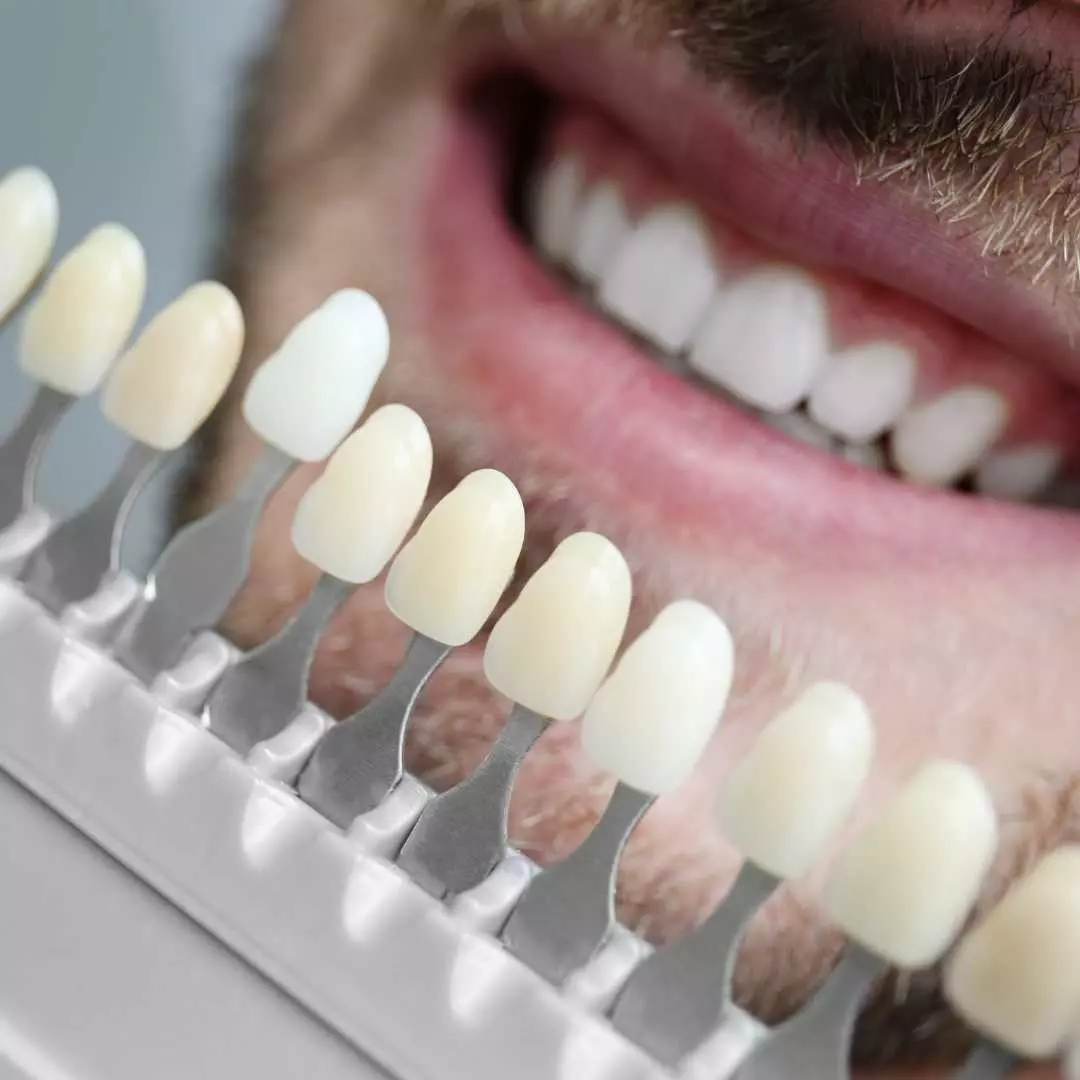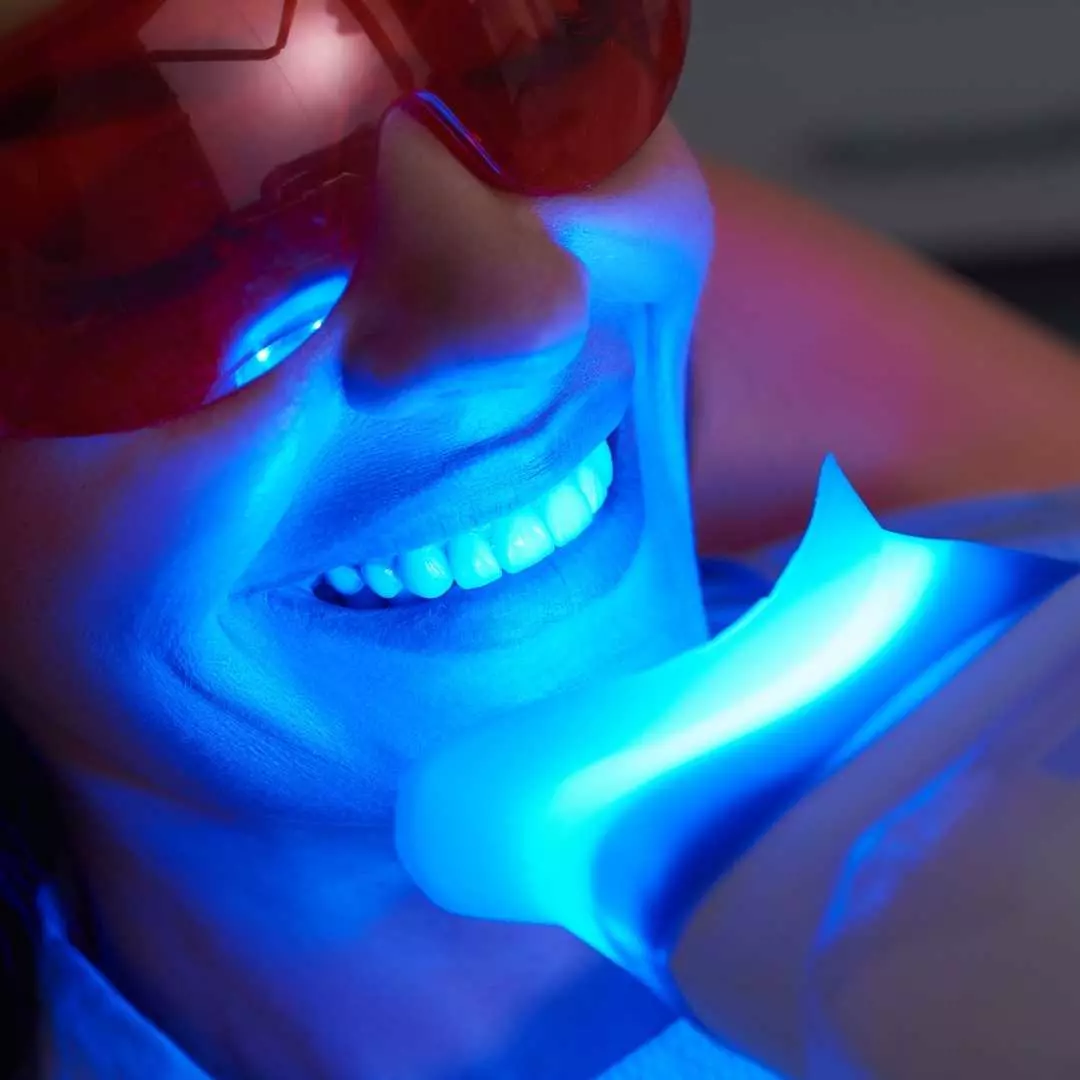
• LAMINATED DENTAL VENEERS : Dental veneers are one of the most popular and modern cosmetic treatments to improve the appearance of teeth. These thin shells made from porcelain or composite resin are custom-made to fit over the front surface of your teeth, providing a natural and aesthetically pleasing look. Dental veneers are highly effective in correcting various dental issues, such as discoloration, chipped or worn teeth, gaps, and misaligned teeth.
Dental veneers are custom-made shells designed to cover the front surface of teeth, improving their appearance. These dental veneers come in mainly three types: porcelain, composite, and E-Max.
Porcelain veneers are favored for their ability to replicate the strength, resilience, and appearance of natural tooth enamel. They are best suited for those who desire a lasting change and are particularly effective in mimicking the light-reflecting properties of natural teeth.
Composite veneers offer a quicker and often more affordable solution. They are less durable than porcelain but can be applied in a single visit, making them a convenient option for minor corrections. The process of applying composite veneers is less invasive than that of porcelain veneers. It requires minimal tooth preparation, which means that more of the natural tooth structure is preserved. This aspect is particularly appealing to patients who prefer a reversible treatment option.
Stages of E-Max Veneer Treatment
Consultation and Evaluation: During the initial consultation, your dentist will assess your teeth and discuss your goals. Impressions and digital scans may be taken to create a precise treatment plan.
Tooth Preparation: A minimal amount of enamel is gently removed from the surface of the teeth to create space for the veneers, ensuring a perfect fit. In some cases, no-prep veneers may be an option due to the thinness of E-Max material.
Fabrication: Once your teeth are prepared, an impression is taken, and the custom-made E-Max veneers are created in a dental lab. This process typically takes 1-2 weeks.
Bonding and Finishing: Once the veneers are ready, your dentist will bond them to your teeth using a strong adhesive. The veneers are then shaped and polished for a flawless finish.

Is the E-Max Veneer Procedure Painful?
The E-Max veneer procedure is generally comfortable and minimally invasive. Local anesthesia is typically used during the preparation phase to ensure there is no discomfort. After the procedure, patients may experience mild sensitivity, but this is temporary and subsides within a few days.
Aftercare for E-Max Veneers
Caring for E-Max veneers is straightforward. Regular brushing, flossing, and routine dental check-ups will keep your veneers in optimal condition. Since E-Max veneers are strong, they are more resistant to damage; however, it’s still important to avoid habits like biting on hard objects to prevent any potential damage.
All three types of veneers provide significant benefits depending on the needs and goals of the patient. Dental veneers are an ideal choice for individuals seeking to correct various dental issues such as misalignments, uneven spacing, and extensive staining that cannot be corrected by whitening alone.
Is the Veneer Procedure Painful?
The dental veneer procedure is generally painless and minimally invasive. Local anesthesia may be used during the tooth preparation phase to ensure your comfort. Some patients may experience mild sensitivity after the procedure, but this is temporary and resolves within a few days.


